
Chapter 2. Basic knowledge of food analysis
Chapter 2. Basic knowledge of food analysis
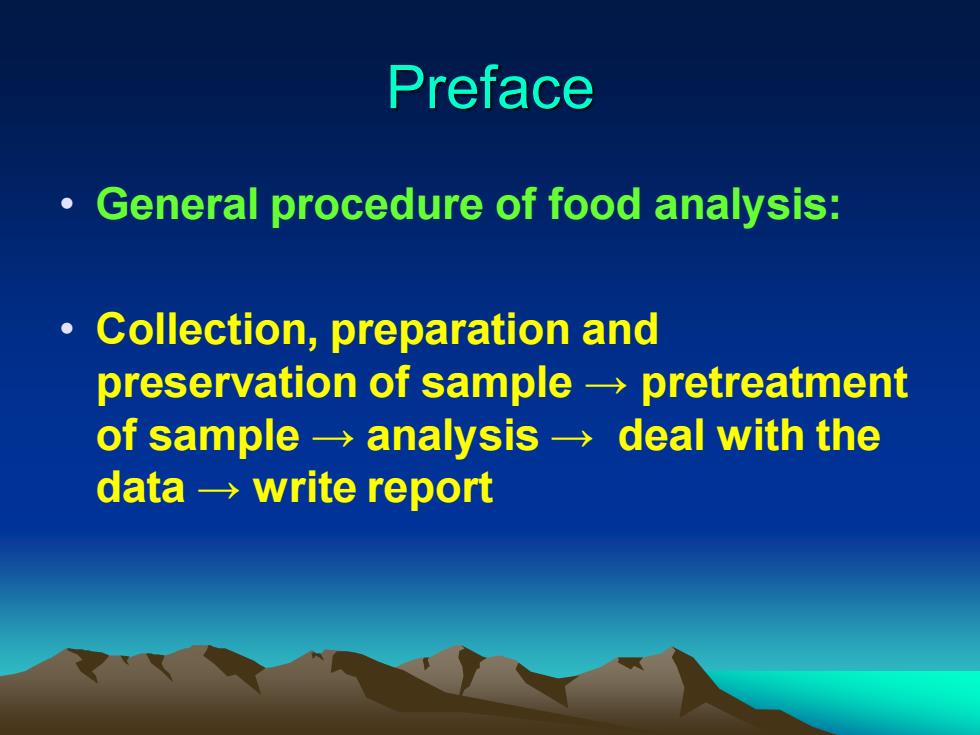
Preface • General procedure of food analysis: • Collection, preparation and preservation of sample → pretreatment of sample → analysis → deal with the data → write report
Preface • General procedure of food analysis: • Collection, preparation and preservation of sample → pretreatment of sample → analysis → deal with the data → write report
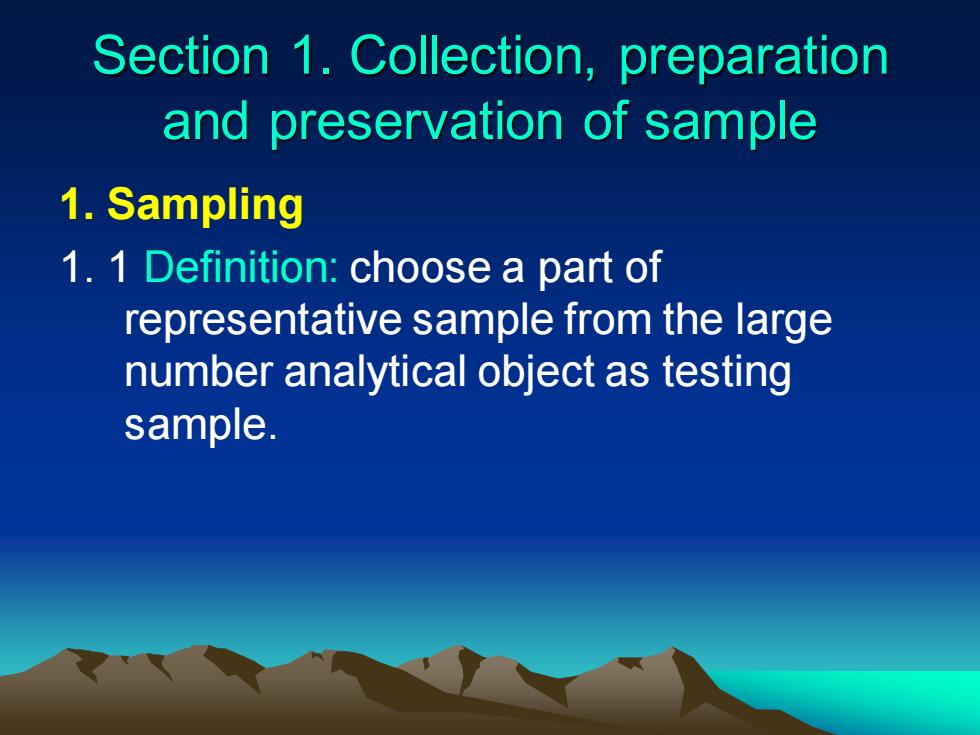
Section 1. Collection, preparation and preservation of sample 1. Sampling 1. 1 Definition: choose a part of representative sample from the large number analytical object as testing sample
Section 1. Collection, preparation and preservation of sample 1. Sampling 1. 1 Definition: choose a part of representative sample from the large number analytical object as testing sample
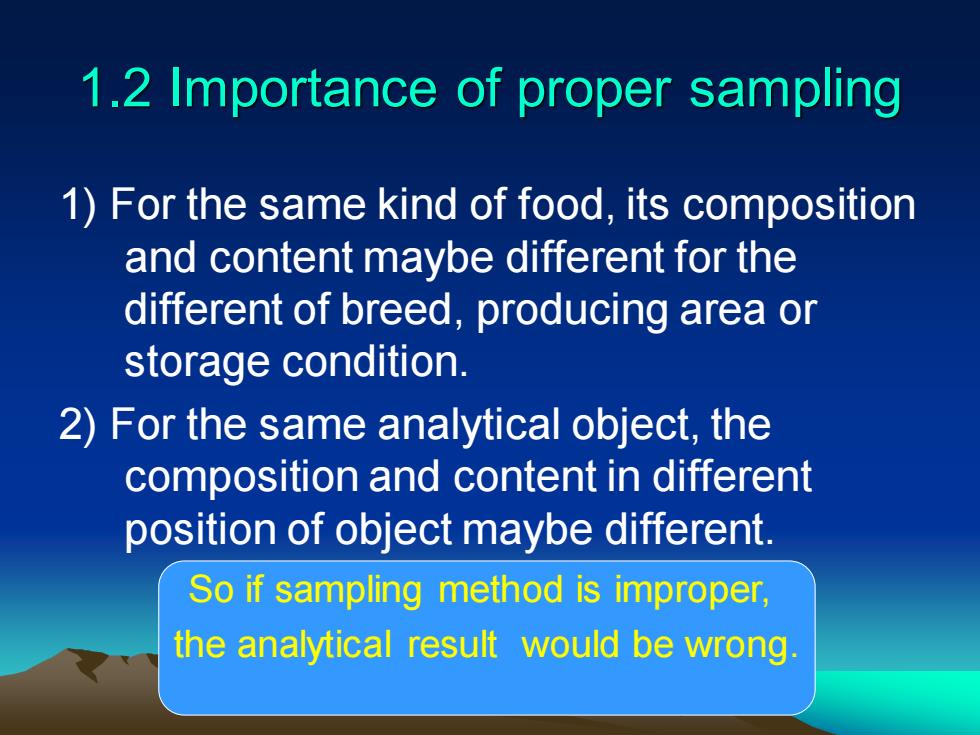
1.2 Importance of proper sampling 1) For the same kind of food, its composition and content maybe different for the different of breed, producing area or storage condition. 2) For the same analytical object, the composition and content in different position of object maybe different. So if sampling method is improper, the analytical result would be wrong
1.2 Importance of proper sampling 1) For the same kind of food, its composition and content maybe different for the different of breed, producing area or storage condition. 2) For the same analytical object, the composition and content in different position of object maybe different. So if sampling method is improper, the analytical result would be wrong

1.3 Principle of right sampling • 1) Representative • 2) Keep the original condition of sample
1.3 Principle of right sampling • 1) Representative • 2) Keep the original condition of sample

1.4 Process of sampling • Check sample→original sample→average sample • 检样:由分析对象大批物料的各个部分采集的少 量物料称为检样。 • 原始样品:许多份检样综合在一起称为原始样品。 • 平均样品:原始样品经过技术处理,再抽取其中 的一部分供分析检验的样品,称为平均样品
1.4 Process of sampling • Check sample→original sample→average sample • 检样:由分析对象大批物料的各个部分采集的少 量物料称为检样。 • 原始样品:许多份检样综合在一起称为原始样品。 • 平均样品:原始样品经过技术处理,再抽取其中 的一部分供分析检验的样品,称为平均样品

1.5 General method of sampling • 1) Random sampling • 2) Representative sampling
1.5 General method of sampling • 1) Random sampling • 2) Representative sampling
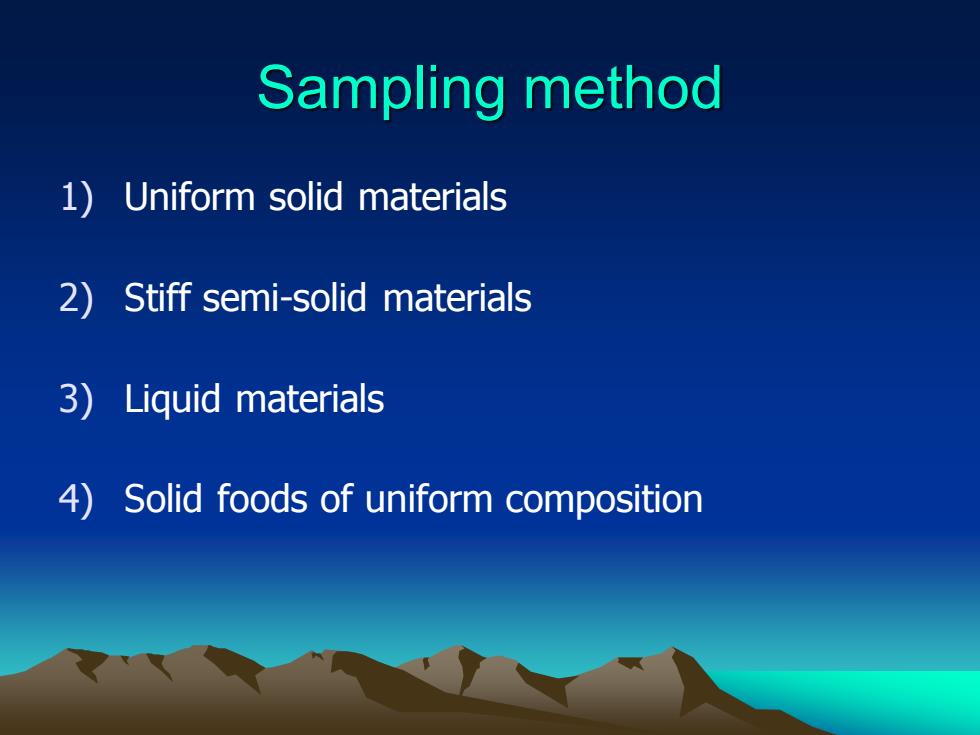
Sampling method 1) Uniform solid materials 2) Stiff semi-solid materials 3) Liquid materials 4) Solid foods of uniform composition
Sampling method 1) Uniform solid materials 2) Stiff semi-solid materials 3) Liquid materials 4) Solid foods of uniform composition

1.6 Quantity of sample • Sample should be divided into three parts , and each quantity should be no less than 0.5 kg
1.6 Quantity of sample • Sample should be divided into three parts , and each quantity should be no less than 0.5 kg
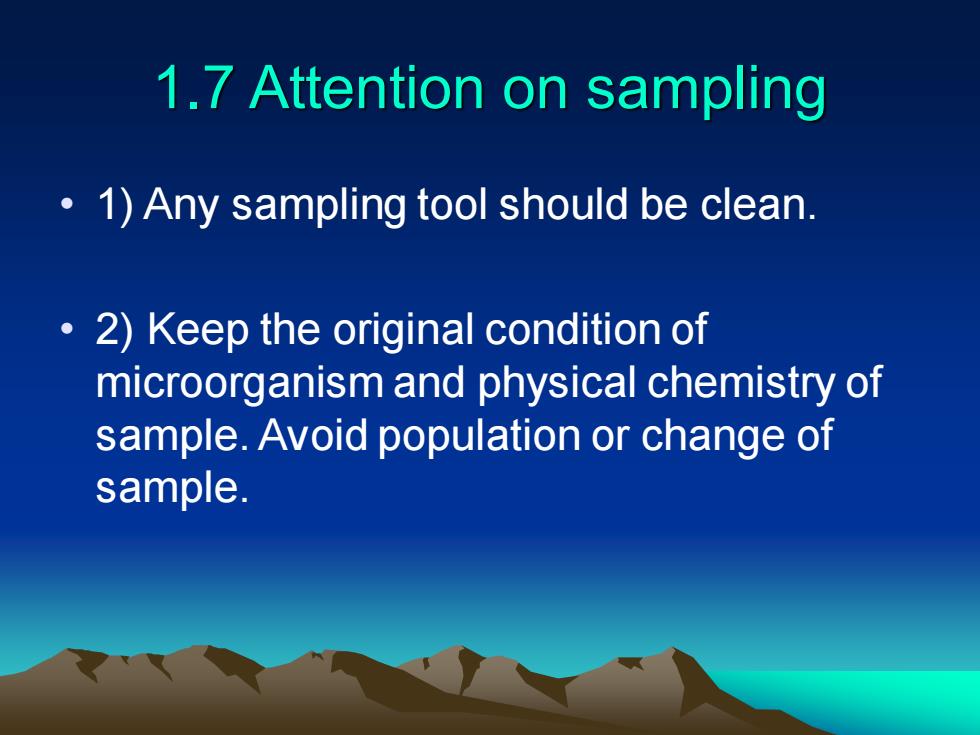
1.7 Attention on sampling • 1) Any sampling tool should be clean. • 2) Keep the original condition of microorganism and physical chemistry of sample. Avoid population or change of sample
1.7 Attention on sampling • 1) Any sampling tool should be clean. • 2) Keep the original condition of microorganism and physical chemistry of sample. Avoid population or change of sample